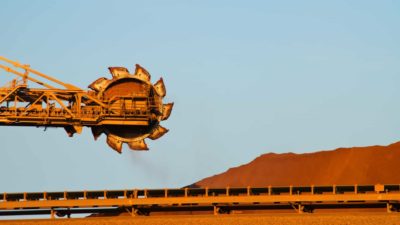The Hawsons Iron Ltd (ASX: HIO) share price has been at the forefront of investor attention since the start of April.
The company's shares accelerated from 28 cents on 1 April to reach an all-time high of $1.08 during intraday trading on 3 May, before ending the day at 72 cents. At its intraday high, this represented an astonishing gain of around 285% in a little over a month.
However, since then, the resource developer's shares have continued to trend lower.
At Friday's market close, the Hawsons Iron share price finished 2.08% higher at 49 cents.
What's happened to Hawsons shares?
A couple of company announcements during April helped drive up the Hawsons share price.
However, the general market downturn on the All Ordinaries Index (ASX: XAO) has since created strong selling pressure.
For context, as at Friday's close, the All Ords had lost more than 8% since 1 April. Fears about rising interest rates and the risk of recession in the first half of next year have weighed on investor sentiment.
While Hawsons shares have dipped to mid-April levels, they are still up by around 190% so far this year.
The company is focused on developing the Hawsons Iron Project in Broken Hill, New South Wales. Discovered in 2009, it is considered to be the world's biggest, undeveloped, high-quality iron ore project.
Following a successful pre-feasibility study in 2017, management is now focused on progressing the project. This includes progressing a bankable feasibility study, obtaining a mining lease and beginning production by mid-2024.
Is the Hawsons Iron share price set to fall further?
Previously known as Carpentaria Resources, Hawsons Iron shares have surged by around 280% over the past 12 months.
While it's anyone's guess what will happen over the long term, for now, the company's shares appear destined to fall further. This is due to Wall Street entering bear market territory last night Aussie time, which is set to cause widespread sell-off on the ASX today.
Based on the last closing price, Hawsons commands a market capitalisation of roughly $347 million.









